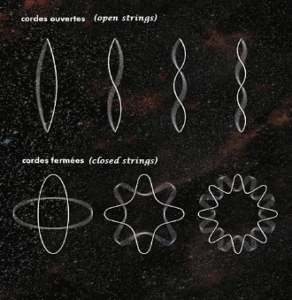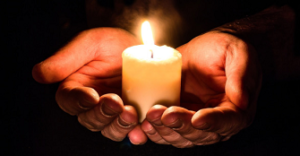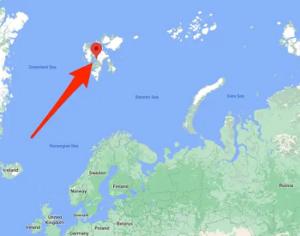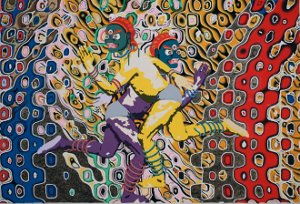
What is the universe made of and what is its origin?
Greek philosophers from the 6th century BC believed that the four elements of all nature were: fire, earth, water and air, Pythagoras proposed a practically religious school that everything was numbers while Democritus proposed the atom and that they would have rounded, smooth, irregular shapes and smooth, being able to form an infinity of elements, but until the end of the Middle Ages it was believed that fire was composed of one of these particles: the firegist, we owe the chemical table to Dimitri Mendelev who in 1869 organized his chemical elements, previously the alchemist Henning Brad discovered that phosphorus heated with urine residue caused flames and Antoine Lavoisier in 1789 organized some elements into simple, metallic, non-metallic and non-metallic.
believed that the four elements of all nature were: fire, earth, water and air, Pythagoras proposed a practically religious school that everything was numbers while Democritus proposed the atom and that they would have rounded, smooth, irregular shapes and smooth, being able to form an infinity of elements, but until the end of the Middle Ages it was believed that fire was composed of one of these particles: the firegist, we owe the chemical table to Dimitri Mendelev who in 1869 organized his chemical elements, previously the alchemist Henning Brad discovered that phosphorus heated with urine residue caused flames and Antoine Lavoisier in 1789 organized some elements into simple, metallic, non-metallic and non-metallic.
Current standard physics has established 7 elements: neutrinos, electron, quarks, photon, graviton, gluon and weak force boson, but there is a more mysterious quantum world that of superstrings, it seems frightening or using the physicists’ word ghostly (Einstein used it the first time realizing that there is a third state in quantum physics in which the element is neither nor is it, later called the Included Third).
The most convincing theory of the universe until recently was that of the Big Bang and an expanding universe, entropy, Stephen Hawking was its great theorist, although this theory already existed before, and thus proposed an “arrow of time” in his most important book. famous “A brief history of time” (1988), but James Webb’s discoveries called into question when he found galaxies and celestial bodies at the edge of the universe that shouldn’t be there, now even the arrow of time is questioned.
The important thing when looking at the universe is to understand where everything came from and whether this whole thing and intelligent life, which for now we only find on our planet Earth, had a beginning and more importantly, had an intention.
The biblical “fiat lux” seems to agree so much with the Big Bang theory, before atoms there were waves or “strings” created in the first 10−44 seconds (Planck time) and then subatomic elements were created, in the case of strings, everything It is initially formed by one-dimensional strings that would be divided into “open” strings (linear) and “closed” strings (in loop strength), vibrating at different frequencies that would give rise not only to the 7 elements, but also the molecules that initiate life.
Be that as it may, there was an initial moment, and the form of this “being” must have been preceded by a creative “being”, the paleontologist and Christian theologian Teilhard Chardin proposed that the entire universe would be the body of this supreme “Being” of the “being”, thus he should have a divine and a material (human) reality, thus he proposed that the universe is Christocentric.
It is not possible for the All to have emerged from nothing, and if there is an original form of the All, of some “element” the physical world is composed, thus there is a “Corpus” of this All, with the difference that He is the creator and all the rest created, but created with some substrate of its own Supreme Being, of course the theory for this is more elaborate, but its understanding is simple, we are part of a body, of a group that communicates, the idea of the individuation of the universe is not plausible, because at the beginning we were one thing: a small cosmic corpuscle, a set of vibrating strings (we could even think of a choir making a song), but there was a moment of creation. and Someone created it.
The all, the whole and the divine
After developing delicate and controversial subjects such as pain, waiting in the very sense of hope, which Byung-Chul uses the philosophical term of “containment”, he finishes his book, which could be said to be his first philosophical writing, even though he did his doctoral thesis on Heidegger, with what must be the most controversial for today’s philosophy: the whole.
such as pain, waiting in the very sense of hope, which Byung-Chul uses the philosophical term of “containment”, he finishes his book, which could be said to be his first philosophical writing, even though he did his doctoral thesis on Heidegger, with what must be the most controversial for today’s philosophy: the whole.
At the end of the 19th century and the beginning of the 20th, physics, science and philosophy that seemed full of their “knowledge” took a reversal, the linguistic shift, but there is another one underway that is even more profound: the revenge of the sacred, After leading humanity to two wars, to the exhausting work of the “Society of Fatigue” (in English it was translated as the Burnout Society), idealistic arrogance wants to proclaim the death of God, the all or the whole is what, the last James Webb’s research appears to be unanswered.
Even the Big Bang theory is at stake, the arrow of time may not be correct, in other words, time may be a human abstraction, galaxies seen at the ends of the universe do not coincide with the physics of the Standard Model (in this case of Cosmology) and show that the concept needs to be revised, but let’s leave this to physicists and cosmologists, our biggest dilemma is still: “what are we and where did we come from”, translated into philosophical language: what is being, and what is Being of beings (or coming from particles and cosmic dust).
This is expressed in the Theory of Everything, the name of the film, based on the book by Stephen Hawking’s wife, Jane Hawking, entitled: “Travelling to Infinity: My Life with Stephen”.
For a while we forgot this dilemma, addressed since the beginning of this series of posts about the reading of “Heidegger’s heart” by Byung-Chul Han, not just the anthropological sleep advocated by Foucault, but the idealistic sleep of the reason of our time, that which caused a forgetfulness of being.
The beginning of the chapter is a provocation, I believe, when quoting Hegel in the epigraph: “Truth is the whole”, since Heidegger and his rereading of Han return to that “turn” in which “the truth of the essence of being withdraws into the being” (pg. 337), where consciousness itself is already “the concern to distinguish between natural knowledge and real knowledge” (pg. 340), it is in the dialectical experience of pain: “the dialectical worker is a sufferer. He goes through an ordeal, exhausts himself in the power of the Absolute, and does so precisely to live” (pg. 346), the emphasis on living belongs to the author.
“Those who still speak of the whole today raise suspicions” (pg. 455) is the opening sentence of the final chapter, but idealism never abandoned the abstract notion of the Absolute, because it is an imperative of any theory to outline contours where the truth is valid, for This is the phrase in the epigraph of the final chapter, I think, but “in Heidegger’s heart beats for the totality from the beginning” (pg. 455), he expresses it in his pathos for everything: “What was said perhaps indicates that the present work intend to be philosophical, insofar as it was undertaken in the service of the ultimate totality” (pg. 456), but in contrast to the Hegelian, “the Heideggerian whole does not capitalize on the death of the particular” (pg. 457), if we want to return to physics is worth rereading by Werner Heisenberg: “The part and the whole”, where we see the thresholds of modern quantum physics, where there are several traces of well-defined philosophy.
Understanding pain, containment and anguish and identity in difference (we have already stated that it is not the idealistic difference), the Heideggerian whole is not a place of birth, not a place of origin, but a place of birth” (pg . 459), a “non-metaphysical house as a dwelling space” (pg. 459), we would say the dwelling of the Being, full and divinized.
And also, its mundane totality, is not contaminated by the climate of postmodern thought, in it one can notice the total lack: “of odor, landscape or nature” (pg. 460), “with the history of being Heidegger writes a certain metanarrative”, but it cannot be denied that “Heidegger’s thought also has metaphysical traits” (pg. 461), his philosophy “are not language games [like Derridá], nor speeches”. (pg. 463), for him there is the being of language, “language games would be an ontic phenomenon” (pg. 463).
We develop the question of the voice (see the post), but Han asks: “in what affective tone does today’s thinking place this voice”, is it not a response to that truth that dwells within every man? not following it Is it accepting pain, anguish, difference and dispute outside of conflict and war?
There is that inner voice, to those who know how to do silence and epoché, there is the Being that is the whole and that lives within us, but we have to go through pain, through donation and accept the difference.
HAN, B.C. (2023) Coração de Heidegger: sobre o conceito de tonalidade afetiva em Martin Heidegger (Heidegger’s heart: on the concept of affective tonality in Martin Heidegger). Transl. Rafael Rodrigues Garcia, Milton Camargo Mota. Brazil, Petrópolis: Vozes.
Renunciation, economy and joy
Byung-Chul theorizes that despite the difference between Derridá and Heidegger (see our previous post) there is a structural affinity in their vision of mourning, which is characterized by the renunciation of the subject’s autonomy in Derrida: “No matter how narcissistic our subjective speculation continues to be, , it can no longer close itself to this gaze, before which we ourselves show ourselves the moment we convert it into our mourning or we can give up on it [faire de lui notre dueil], mourning, making ourselves mourn for ourselves, I mean, I mourn the loss of our autonomy, for everything that made us the measure of ourselves” (Han, p. 430 citing Derridá’s text “Krafter der Trauer”, strengthening of pain), this That is, they both have in common a vision of renouncing the autonomy of the subject, the “I” of idealism.
between Derridá and Heidegger (see our previous post) there is a structural affinity in their vision of mourning, which is characterized by the renunciation of the subject’s autonomy in Derrida: “No matter how narcissistic our subjective speculation continues to be, , it can no longer close itself to this gaze, before which we ourselves show ourselves the moment we convert it into our mourning or we can give up on it [faire de lui notre dueil], mourning, making ourselves mourn for ourselves, I mean, I mourn the loss of our autonomy, for everything that made us the measure of ourselves” (Han, p. 430 citing Derridá’s text “Krafter der Trauer”, strengthening of pain), this That is, they both have in common a vision of renouncing the autonomy of the subject, the “I” of idealism.
Here the important thing is not to let mourning work (let us remember the concept already seen in the posts about “work mourning”) it is replaced in Derridá by a game of mourning: “however, the happier the joy, the purer the sadness that sleeps in it. The deeper the sadness, the more it calls us to joy…” (Han, pg. 430-431), but Heidegger’s mourning, explains Han, does not kill death, trying to kill it results in something even worse: “ wanting to resurrect, violently and actively surpassing the limit of death would only drag them (the gods) into a false and non-divine proximity and would bring death instead of our life” (Han, pg. 431-432 quoting Heidegger).
Heidegger explains that it is “not a symptom that can be eliminated by psychoeconomic accounting. He does not have a deficient trait that involves work (of mourning).
This “withdrawn” or “saved” for which Heidegger’s “holy and mourning” heart beats is not subject to economics, this “saved” cannot be spent or capitalized, it is therefore that which is and characterizes renunciation, Han does not exemplifies, but we can think of humanitarian aid in disasters and wars, as it will characterize the identity of renunciation and gratitude as conceivable outside of economics, using Heideggerian terms “grievously bear the need to renounce” and promises the “unthinkable donation”.
A profound and wise phrase by Heidegger says, renunciation is the “highest form of possession”, it seems contrary, but we only really have what we can give because otherwise it is a commodity of exchange, and even more so renunciation becomes gratitude and “ duty of gratitude”, this pain increases and becomes joy: “the deeper the sadness, the more the joy that rests in it calls us”. (pg. 433), but it does not even become sublimation, which forces us to “work”, as it is the “inhibition of all income” and the “awareness of the emptiness and poverty of the world”.
Praise of misery one might think, is not a praise of moderate and continuous joy, different from the euphoria and ecstasy that is followed by depression, “the lack of the divine brings about mourning, goes back to an obstinate forgetfulness of being, in which Heidegger inscribes the divine” (Han, p. 433-434), but it is certainly not yet the biblical divine, but surrounds it.
The reward and joy of the Divine inscribed in the being, is that which renounces and gives, but knows that there will be a reward of receiving a hundred times more, not in goods, but in joy.
Han, Byung-Chul (2023) Coração de Heidegger: sobre o conceito de tonalidade afetiva em Martin Heidegger (Heidegger’s heart: on the concept of affective tonality in Martin Heidegger). Transl. Rafael Rodrigues Garcia, Milton Camargo Mota. Brazil, Petrópolis: Vozes.
The difference, the wars and the calamities
All reading in the recent posts about “Heidegger’s heart: on the concept of affective tonality” by Byung Chul Han is not a mere philosophical exercise, especially because philosophy has returned to sophistry in a more sophisticated way: narrative, it is because the absence of pain perception exacerbates the difficulty in understanding the other’s pain and the difference.
heart: on the concept of affective tonality” by Byung Chul Han is not a mere philosophical exercise, especially because philosophy has returned to sophistry in a more sophisticated way: narrative, it is because the absence of pain perception exacerbates the difficulty in understanding the other’s pain and the difference.
He wrote about Hegel’s dialectic: “Heidegger uses the word ‘differ’ to describe the tragic-dialectic movement of difference”, and opens quotation marks: “But, in truth, in Hegel beings no longer exist, since all beings have dissolved into the movement of the absolute concept” (pg. 414), and added: “The “differance as differance”, the “differing”, is the blind spot of metaphysics” (pg. 415), and thus: “Différance is more contentious than than Hegel’s difference” (pg. 415) and this explains how idealist thought is more attached to highlighting its political difference than capable of understanding the true meaning of treating those who are different, especially the excluded, the innocent in wars, and The pain of a tragic flood becomes more of a game in the field of power than reaching the hearts of those who can help the affected people.
Difference “is not articulated in “contradictions” that exist in the space of identity, but works for manifestations of identity” (pg. 415), this is how pain works.
Byung-Chul opposes Hegel in addition to Heidegger also to Derridá, “differance maintains discord […] without ever forming a third expression”, maintains contention, “without ever giving reason for a solution along the lines of speculative dialectics ” (Han, pg. 416 quoting Derridá), and says “the pure play of difference is nothing, it does not even relate to its own fire” (pg. 417), see Han’s emphasis on the Western culture of “relationship ”, but the German-Korean’s wit gets there: “Subjectivity is always produced in a movement of westernization” (pg. 417).
The search for “speculative dialectics” is for an ontotheological or ontoteleological synthesis, I would say more the latter since Hegel’s god is invented, that of an abstract absolute, but not far from the triumphant God of Manichaeism, expressed not only in the justifications of wars and in différance, the westernized god also judges, condemns and excludes and makes sacred readings a game of convenience, mourning, pain and suffering have no space, everything is power, joy and consumption, the kingdom in sameness proclaiming difference.
“What does Derridá’s pain revolve around?” asks Byung-Chul, “Around the lack of a sacred name?” (pg. 424), those would say yes because not even the Absolute, or the Whole can have an ontological answer, perhaps enthelogical (in the sense of pure e objective being), but the author points out his mourning as “probably” like the difference, it is banal (Derridá says this).
In our view, the inability to mourn, to renounce, to understand pain prevents us from a complete vision of the whole as sacred. The innocent deaths of wars, natural catastrophes and respect for differences do not cause us grief, without a Sacred that references these values, we create a thing, an entity that replaces it.
Han, B.C. (2023) Coração de Heidegger: sobre o conceito de tonalidade afetiva em Martin Heidegger (Heidegger’s heart: on the concept of affective tonality in Martin Heidegger). Transl. Rafael Rodrigues Garcia, Milton Camargo Mota. Brazil, Petrópolis: Vozes.
The heart, the pain and the truth
Heidegger’s thought must start from starting, read by Byung-Chul in Introduction to the Phenomenology of Spirit “in terms of the forgetfulness of being”, he sees it as an “arid self” that finds “its limitation to the being that meets it ” (Han, pg. 334 citing Hegel).
to the Phenomenology of Spirit “in terms of the forgetfulness of being”, he sees it as an “arid self” that finds “its limitation to the being that meets it ” (Han, pg. 334 citing Hegel).
Although he recovers Hegel, in part, in the epigraph of the last chapter: “truth is the whole”, he re-discusses dialectics and its metaphysics in idealism: “in relation to “just being” which empties it to a name “that does not names nothing else”, natural consciousness… when it becomes aware of being, it assures that it is something abstract. ” (Han, pg 336).
Natural consciousness (seen in this way) “lingers on ‘perversities’… “it tries to eliminate one perversity by organizing another, without remembering the authentic inversion” where “the truth of the essence of being is withdrawn into beings” (pg. 336 with quotes from Heidegger), who sees this as a step back and the “already” forgotten, misunderstood (pg. 337), does not appear completely denied, it appears in the form of “not yet” which is not a negation, nor a barricade, since “next to the already prevents it from presenting itself” (pg. 337).
There is a whole development in contrast with Hegel’s dialectic, more than a topic it could very well be a book, but the dialogue he has with Derridá and Adorno in the chapter on Mourning and the work of mourning, leads to his vision of the whole outside of dialectical abstraction, says the concern with immortality, with killing death, is not only secret in the hearts of Plato or Hegel (pg. 384), it would be the main concern with the “cardiographic” archive of the history of philosophy, in it the philosopher “works” to reverse the negative of being.
This is what will give basis to his “work of mourning”: “being capable of death as death”, that is, being capable of mourning, this “tragedy” “is radically different from the noisy work of mourning of the Hegelian dialectic” (Han, p. 385).
“Tears free the subject from his narcissistic interiority… they are the “spell that the subject casts on nature” (Han, p. 394) now quoting Adorno, and the author states that “Aesthetic Theory is the book of tears (idem) and that unlike Kant, and that “the spirit perceives, in front of nature, and that “the spirit perceives, in relation to nature, less its own superiority than its own naturalness” (p. 395).
“The aesthetic experience shakes the narcissistic subject who considers himself sovereign and makes the hardened principle of the “I” crumble… the tear of the shaken and moved subject proves to be capable of truth” (pg. 395).
Capable of truth, of the infinite and for those who believe in God, not a God of passing goods and false joy, but that of the already, but not yet, that beyond pain and the transience of temporal things.
Han, B.C. (2023) Coração de Heidegger: sobre o conceito de tonalidade afetiva em Martin Heidegger (Heidegger’s heart: on the concept of affective tonality in Martin Heidegger). Transl. Rafael Rodrigues Garcia, Milton Camargo Mota. Brazil, Petrópolis: Vozes.
.
Pain and Being
We said previously that the chapter on the topic of the Voice could be the final one, but as Heidegger saw it, and Byung-Chul Han was faithful, it is part of the development of the Being, when talking about pain, a subject that Han also dealt with in the “Palliative Society: pain today” and we have already made some posts, the way we treat the pandemic and now the floods that affected thousands of lives in Rio Grande do Sul, should be a point of analysis and understanding, in a society that does not want to look at this side of life: suffering and pain.
of the Voice could be the final one, but as Heidegger saw it, and Byung-Chul Han was faithful, it is part of the development of the Being, when talking about pain, a subject that Han also dealt with in the “Palliative Society: pain today” and we have already made some posts, the way we treat the pandemic and now the floods that affected thousands of lives in Rio Grande do Sul, should be a point of analysis and understanding, in a society that does not want to look at this side of life: suffering and pain.
Not by chance, Heidegger addresses this when elaborating on Parmenides, where ontology is reduced to Being is and non-Being is not, to a logic A and not-A, with no third hypothesis, there Heidegger speaks of “a certain death (sacrificial ) of the human being: “But the supreme form of pain is the dying of death, which sacrifices the human being for the preservation of the truth of being” (pg. 321), so the sacrifice is not here, as “the sacrifice has in itself its own essence and does not need objectives or benefits? ” (idem).
In the previous post we discussed idealistic sleep, here Han quotes Foucault asking “is it a matter of a certain agony to awaken the thought of an “anthropological awakening”?” (idem), perhaps an anthropotechnical awake or even as we prefer an onto-anthropotechnical sleep, since the forgetfulness of being is not just a philosophical category.
When addressing the emptiness of modern man, also based on the reading of Foucault, Han recalls that Heidegger, when resuming the metaphysical category “subjectum”, which in “its essence is modern man is the “subject” and it is exactly here that Heidegger “criticizes implicitly anthropological thought” (pg. 322), it is according to Heidegger: “the continuation of Cartesianism”, Han quoting him: “With the interpretation of man as subjectum. Descartes creates the metaphysical presupposition for future anthropology of every type and orientation” (pg. 323).
Thus it is not man’s opposition to beings, but modernity’s mistaken opposition to language: “concern for language would be concern for death. Giving language back to man would therefore mean giving him back death, his mortality” (pg. 324), and it is also not about the ‘being’ or ‘non-being’ of the human being” (pg. 325-326 ).
It is important to highlight the calculating economy seen by Heidegger: “Pain is from ‘because’, not from ‘due to’… mourning does not lament, it does not seek to fill the place that was left empty… mourning without mourning is only conceivable outside of economics (VIII.3)” (pg. 328).
Pain is not the resignation of absolute interiority: “the subject who works on identity, returning to himself in his interiority, assimilating the world, is incapable of pain” (pg. 329), while other thinkers stopped in anguish or in the search through difference or even through the subject destined for an “absolute spirit”, Heidegger sees in pain a “fundamental affective tone of melancholy” (pg. 329), it is the tone of being… of finitude… of finite thought, “ it is the identical feature that, as the basis of a certain formal manner, supports every fundamental tonality occupied by some content, the main feature that, as the same, is the basis of the mode as the respective tuning” (pg. 330).
So pain, for Heidegger and I suppose for Han (he treats it a little differently in the palliative society), !pain is not the eye that cries, or the face contorted by hunger or torture”, pain opens a space in which thinking becomes possible for the first time… a space without anthropological traces, and from which the subject disappeared… thinking would be, a gift of pain” (pg. 331).
The conclusion of this topic: “the rift of pain drags the veiled march of grace until an unused advent of clemency” (pg. 332), which is why we venerate power, violence and the lack of vision of true peace, love outside the bubbles, selfishness and ultimately a lack of “clemency”, it may seem like a religious matter only, but it is the search for the essence of Being.
Han, B.C. (2023) Coração de Heidegger: sobre o conceito de tonalidade afetiva em Martin Heidegger (Heidegger’s heart: on the concept of affective tonality in Martin Heidegger). Transl. Rafael Rodrigues Garcia, Milton Camargo Mota. Brazil, Petrópolis: Vozes.
Waiting for hope greater than the rush
Someone wrote that hope would not be the verb wait, but Alexandre Dumas wrote: “all human wisdom is summed up in two words: wait and hope”, so hope is articulated with wait as trust with confidence, synonymous with hope, as we have already said in another post she opposes the fear, anguish and emptiness of modern nihilism, themes already developed in Byung-Chul’s reading of Heidegger.
wait, but Alexandre Dumas wrote: “all human wisdom is summed up in two words: wait and hope”, so hope is articulated with wait as trust with confidence, synonymous with hope, as we have already said in another post she opposes the fear, anguish and emptiness of modern nihilism, themes already developed in Byung-Chul’s reading of Heidegger.
We want to reread Han’s reinterpretation of Waiting or Containment, VII 2.3 which begins on page 302, as we said previously this is the author’s longest essay and perhaps (I think so) his first truly philosophical writings, since it combines Heidegger with his vision of Kant, Hegel, Derridá and Lévinas, the latter seems to the author’s taste.
Chul-Han states that this is the author’s initial affective tone, when writing his youthful poem, in 1910: “in front of the gate of the spring garden / we wait and listen / until the larks fly / until the songs and the violins / the murmur of the fountains / the silver / bells of the flocks / become a universal chorus of joy” (Han, pg. 302 quoting Heidegger), as the author says it seems “sung in naive images” but late Heidegger seems to wait for “the day of Being” which also resonates naively, but “waiting in Heidegger is not linked to a chronological date nor to an empirical event” … it is “a singular movement, in a flat (non) intentionality, in a (non-) peculiar economy” (page 303), “does not wait for a deficiency to be repaired” (idem).
In the seminar on Heraclitus, Byung-Chul wrote, he makes the difference between waiting and having hope: “having hope always includes counting on something, while waiting – if we stick to the word – is an attitude of conformity […] Having hope it means “to be firmly occupied with something”, while in waiting there is resignation, reserve” (pg. 304) so I think, in hope there is a confidence in what I am occupied with.
However, he completes the idea of waiting with restraint, he will write: patience and waiting are “basic traits of restraint” (pg. 305), thus it articulates in the face of the “infinite absence of a tangible counterpart”, “it is the basic trait of serenity” , the lack of contemporary serenity is largely due to a lack of waiting, restraint and patience.
There is thus an articulation between the “not yet” and the “already”, so “Heidegger’s waiting cannot be described as the intentionality of waiting until the end” (pg. 306), “nothing happens only in waiting, which distances itself from the impatient putting-in-front-of-itself, from the intentionality of representation” (pg. 307), in this Heidegger will explain how “renunciation is a counter-economic measure”, he states quoted by Han: “True renunciation – that is , sustained and achieved by a genuinely expansive fundamental affective tone – is creative and generating. By allowing her former possession to go, she receives, and not later as a reward; Bearing in mourning the need to renounce giving in is in itself a reception” (Han, pg. 307, citing Heidegger).
Thinking learns to be grateful by learning to renounce, wrote Han and quoting Heidegger: “Renunciation is a gratitude in not denying oneself, that is where renunciation lies. Renunciation is having to be grateful and, therefore, gratitude” (pg. 308), we theorize here in countless posts the issue of power, renunciation is its position and opposite, “only the gift, which is only possible beyond the economy, makes conceivable gratitude” (pg. 309) and thus it is a “symbolic retribution” “a non-economic thought, which distances itself from the “calculative understanding” (pg. 309), “grateful thinking radically questions the autonomy of the subject without installing a trans-objective instance of power” (idem) and concludes that the “autonomous and trans-objective” “structure would restore the economy” (pg. 309).
Trusting is thus an articulation of the containment of waiting with patience in hope, whoever trusts is capable of renouncing and being grateful, and has his payment in these gifts.
Han, B.C. (2023) Coração de Heidegger: sobre o conceito de tonalidade afetiva em Martin Heidegger (Heidegger’s heart: on the concept of affective tonality in Martin Heidegger). Transl. Rafael Rodrigues Garcia, Milton Camargo Mota. Brazil, Petrópolis: Vozes.
The great idealistic sleep
The dream of idealism was to propose goals to be achieved that gradually proved to be contradictory and some of them are a fundamental part of the crisis of current thought, in which the reasons of state precede the popular will, even if it acts in its name, in fact the concentration of power It seems fair to those who believe they have the final say, finally the reason, to exercise power, this has medieval origins, although diffuse.
be achieved that gradually proved to be contradictory and some of them are a fundamental part of the crisis of current thought, in which the reasons of state precede the popular will, even if it acts in its name, in fact the concentration of power It seems fair to those who believe they have the final say, finally the reason, to exercise power, this has medieval origins, although diffuse.
Even though literature differentiates “idealists” from “realists”, this exists after the Renaissance/seventeenth century paradigm, where in “The Prince” by Machiavelli (1513) it was understood that all the means provided by force and intelligence are lawful for the ruler, from that employed with skill and according to the circumstances (MAQUIAVEL, 2001, p. 85), thus emerge in everyone and in all societies attitudes of force considered reasonable when exercised by the State.
Also contractualism, from Thomas Hobbes, who lived between 1588 and 1679, the State is the fundamental institution to regulate human relations, given the character of the natural condition of men that impels them to seek fulfillment of their desires in any way, at any price, violently, selfishly, this is driven by passions.
In the words of Hobbes, “if two men desire the same thing […] they become enemies”. Everyone would be free and equal to seek profit, security and reputation, according to national author Francisco Welfort, in his work The Classics of Politics (2006), equality between men, in Hobbes’ view, generates ambition, discontent and war”, but it was idealism that divided Man, or the Being of beings, as preferred in ontology, into two opposing halves.
Even though contractualism has the empiricism of Locke (1632-1704), where the state must be a mediator of conflicts, interfering as little as possible in the lives of individuals, and finally Rousseau (1712-1778) who states that man is good, the society that it corrupts (see that there is contractualism on the left and on the right).
Returning to the ontological aspect, in the Heideggerian sense: “the beating of the heart by that “magic key” that could “break a thousand padlocks” would not be the fundamental trait” (Han, p. 280), there is no rigid and perennial light in it. , whose violence and unbridled presence as cause and mistress could penetrate, explain and dominate all phenomena” (Han, p. 281) where there is a direct reference to Plato’s Republic, and Byung-Chul sees him as the first Heidegger.
The second Heidegger is the one who sees the clearing, which “does not offer a fixed setting with a constantly raised curtain, where the theater of beings unfolds” (Han, p. 283) citing Heidegger, where he replaces the physical paradigm of “light ” by the figure of the clearing, to “react against the violent mechanisms of that light that allows everything to coagulate into image” (Han, p. 283), although there is no direct reference to the Enlightenment, it is inevitable to this “luminous” vision of power .
The evident presence is replaced by the non-apparent, which cannot be translated as the counterpart of an encounter: “Here there is no longer an ‘encounter’, no appearance for man already fixes itself in advance and captures what has appeared” (Han, 284), Plato’s world of shadows has never seemed so real as it does today.
So it makes sense to both “unveil” and “clearing”, as terms that are neither “re-vealing” nor illuminating, they are ontological paths where Being “lives”.
HAN, B.C. (2023) Coração de Heidegger: sobre o conceito de tonalidade afetiva em Martin Heidegger (Heidegger’s heart: on the concept of affective tonality in Martin Heidegger). Transl. Rafael Rodrigues Garcia, Milton Camargo Mota. Brazil, Petrópolis: Vozes.
MAQUIAVEL, Nicolau. (2001) O príncipe (the Prince). Transl. de M. J. Goldwasser. Brazil, São Paulo: Martins Fontes.
Ukraine may be just one step in the war
Fears are growing that the Russian advance in northern Ukraine will be able to reach and capture the city of Kharkiv, the second largest in Ukraine and of undisputed industrial and military importance, the scenario could be more serious than one thinks.
northern Ukraine will be able to reach and capture the city of Kharkiv, the second largest in Ukraine and of undisputed industrial and military importance, the scenario could be more serious than one thinks.
There is no ideological connection, but a tactical analysis of the second war, Germany, before invading Poland, annexed Austria, a country with many common traditions and a very similar linguistic structure, the event known as Anschluss (connection or annexation) occurred in May 11-13, 1938, the invasion of Poland took place on the 1st. from E
The basis of conflicts is always this: a certain culture, ethnicity or people considers themselves entitled to dominate other peoples due to their “superiority” by any criteria.
The signs that Russia would not stop there are in several speeches from the Kremlin, recently Putin said that NATO “is messing with fire”, and also claims possession of the Svalbart islands (map) currently owned by Norway, which has already been challenged by Putin who declared: “The Russia’s right to Svalbard cannot be challenged!”
On the NATO side, France had already declared the possibility of a direct NATO confrontation, financial aid continues to be sent, recently Estonia declared that it could send “rearguard” troops to assist Ukraine, however the country’s Defense Minister, Hanno Pevkur, told the European media outlet ERR on May 14 that such talks “got nowhere” in Tallin, and that Estonia would not make a decision alone, but this reveals that there were “talks”.
The US continues to send millions of dollars in aid to Ukraine, but with the elections approaching this weakens the Biden government, the elections will take place in early November.
Another worrying news these days is that a helicopter carrying the President of Iran Ebrahim Raisi and the country’s Minister of Foreign Affairs crashed this Sunday (19) while crossing a mountainous area in heavy fog upon returning from a visit to the Azerbaijan border, the information originated from the Iranian authority.]
Apparently the accident was due to fog, Raisi since being elected in 2021 is known for violent repression of anti-government protests and pushed nuclear negotiations with world powers, Iran is also an important player for its opposition to Israeli attacks in the Gaza region, now in its last stronghold, which is the Rafah region.
There is always hope when people show solidarity with the suffering, the floods in the south awaken the Brazilian people, but we cannot stop there as there are serious rates of illness in addition to the Zika virus that is taking over the country, CNN being the Pan American Health Organization (PAHO) has been alerted to the outbreak.
There is a voice of truth
Although it is a preceding chapter in the book “The Heart of Heidegger”, chapter IV “Voice” could be a conclusion by Byung-Chul, however this is correct as it would not be a Heideggerian conclusion, the epigraph which is a quote from the book of Kings to the prophet Isaiah is symbolic: “Go out and stand on this mountain before the face of the Lord… and it came to pass, when Elijah heard it, that he wrapped his face in his face […]” (Han, pg. 107 ).
IV “Voice” could be a conclusion by Byung-Chul, however this is correct as it would not be a Heideggerian conclusion, the epigraph which is a quote from the book of Kings to the prophet Isaiah is symbolic: “Go out and stand on this mountain before the face of the Lord… and it came to pass, when Elijah heard it, that he wrapped his face in his face […]” (Han, pg. 107 ).
He searches the “series of indications” in Heidegger’s “Four Seminars”, the first is listening than writing, he proposes that there is a connection with metaphysics, while writing is fixed in “logocentrism”, he puts the listener in an affective tone of the appropriating event? And he responds with Plato’s speech about writing as “betrays the living and animated speech of the wise man” (Han, pg. 110), as it withdraws into interiority in time, differs from Hegel who sees “the truth of space” , interestingly the one who claims the story.
“The voice also fulfills the need for an unobstructed interiority, undisturbed by an exteriority” (Han, pg. 111) and it is important that “It creates the appearance of an absolute unworldly interiority” (pg. 111) and it is not about of the egocentrism of Cartesian reason, and of idealism: “hearing-oneself-speak, the fundamental formula of subjectivity, does not do justice to all the phenomenality of the voice” (pg. 113), it questions the narcissistic economy of the mirror.
The flute and the voice for Plato and also in Aristotle are very similar to the human voice, Aristotle wrote: “Now, the singing and the sound of the flute mix as a result of their similarity […]. Furthermore, the flute, due to its sound and its similarity (with the voice), can hide many errors in singing […]” (Aristotle apud Han, pg. 116).
The Being-there of Being and Time (Heidegger) “certainly cannot be suspected of narcissistic blindness. Being-there does not settle inside without windows. Existence means being-outside” and goes beyond “Being-there is at home outside the world” (Han, pg. 118), but neither Heidegger nor Han go all the way in this elaboration, that is, being at home and outside the world world what they really are.
They identify that “being-there relies on the voice that propagates”, and that the “strange voice” reveals itself as belonging to being-there (Han, pg. 119), and who is “the one who calls and the listener are identical” (pg. 119), and who is “the one who calls and the listener are identical” (pg. 119) since “this voice does not carry any meaning, any concept” (pg. 120).
This unity of Being and Being-with-Other cannot be achieved without this true non-egocentric, non-polarizing and non-individual spirituality, a trinitarian concept is needed, that is, there is a third Person who unites the ear and the listener in one thing There is only one final point missing in this conversation between Heidegger and Byung-Chul (in the image the painting by Tsherin Sherpa (Nepal), Lost Spirits, 2014.).
Han, B.C. (2023) Coração de Heidegger: sobre o conceito de tonalidade afetiva em Martin Heidegger (Heidegger’s heart: on the concept of affective tonality in Martin Heidegger). Transl. Rafael Rodrigues Garcia, Milton Camargo Mota. Brazil, Petrópolis: Vozes.

